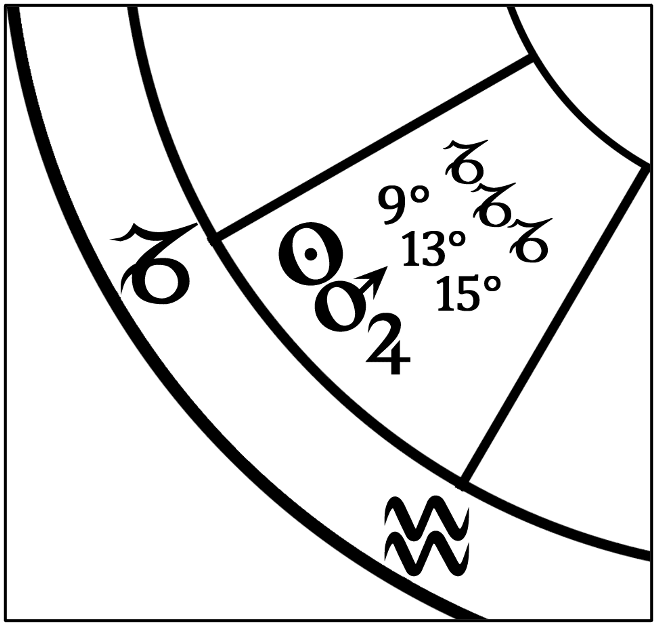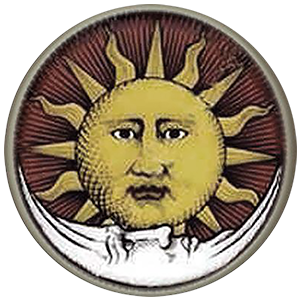Glossary of terms
Special | A | B | C | D | E | F | G | H | I | J | K | L | M | N | O | P | Q | R | S | T | U | V | W | X | Y | Z | ALL
P |
|---|
Prime vertical | |
Printable glossaryPrintable glossary of terms (pdf file) | |
Proportional housesThis refers to a style of chart wheel, sometimes known
as an ‘unequal wheel’. It places the planets and houses against a 360° wheel,
allowing the span of each house to be unequal (and therefore having the
disadvantage of bunching up collections of planets) but allows aspects to be
read with ease. The alternative makes each house the same size and allows an
easy identification of a planet’s house position, but aspects between the
planets are less easy to identify as zodiacal measurement is distorted. | |
Ptolemy - astrologer (c. 100-170 CE)Immensely influential Roman astronomer, astrologer, geographer and scientist who lived in the vicinity of Alexandria, Egypt. He has been called “the most important single figure in the history of astrology, and one of the most important in the history of astronomy” (Robbins, Intro to the English translation; Loeb, 1940). His astronomical textbook, known as Almagest (from the Arabic phrase Al Majesti, ‘The Greatest’) was revered as the ultimate source of reference for astronomers until the 16th century. Ptolemy’s astrological textbook, Tetrabiblos (Gk: ‘Four Books’) also became the standard bearer for subsequent generations and was copied, commented on, paraphrased, and translated into many languages. The Tetrabiblos was largely responsible for laying down the basic precepts of astrology during the Arabic and Medieval periods and was a necessary textbook in some of the finest universities of the Renaissance and early modern Europe. | ||
Q |
|---|
Quadrant systemsMethods of house division that associate the ascendant
with the cusp of the 1st house, the MC with the cusp of the 10th
house, the descendant with the cusp of the 7th house and the IC with the cusp
of the 4th house, and then seek an equal division (of time or space) within those quadrants. The equal house system is not a quadrant
system, and so the MC does not necessarily denote the cusp of the 10th
house. | |
Quarters/Quadrants | |
QuerentThe person asking the question in a horary chart. | |
QuesitedThe thing asked about in a horary chart. | |
R |
|---|
Radical chartThe source chart from which derived houses or
progressions are obtained. In charts that use
‘turned houses’ (as in horary), references to the ‘radical house’
relate to the normal flow of houses, which ties the 1st house to the ascendant.
So the radical 10th house is the normal 10th house of the horary, which
falls on the midheaven, although this might be used as the ‘turned 4th
house’ for a partner. The term derives from the Latin radix, meaning ‘root’.
In traditional texts dealing with natal astrology, the birth chart is also frequently
referred to as the ‘radix chart’. | |

